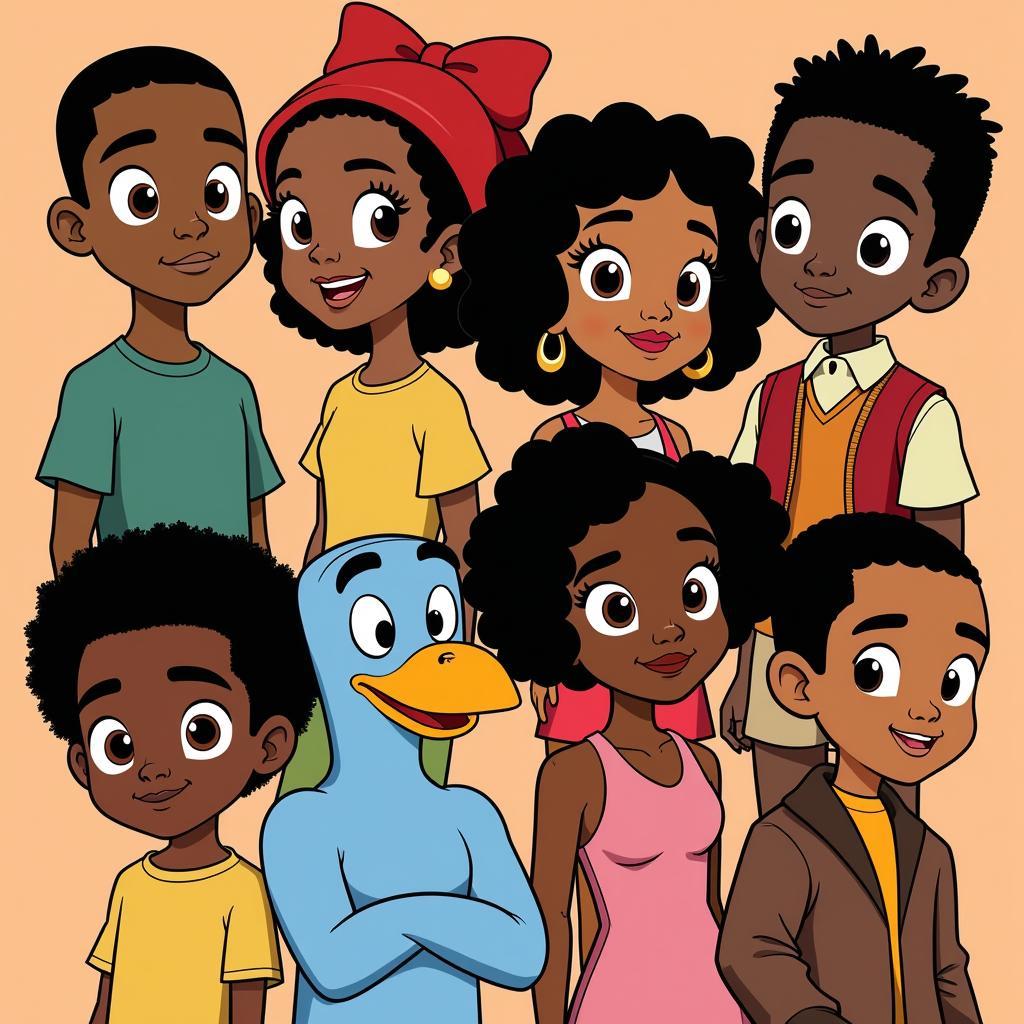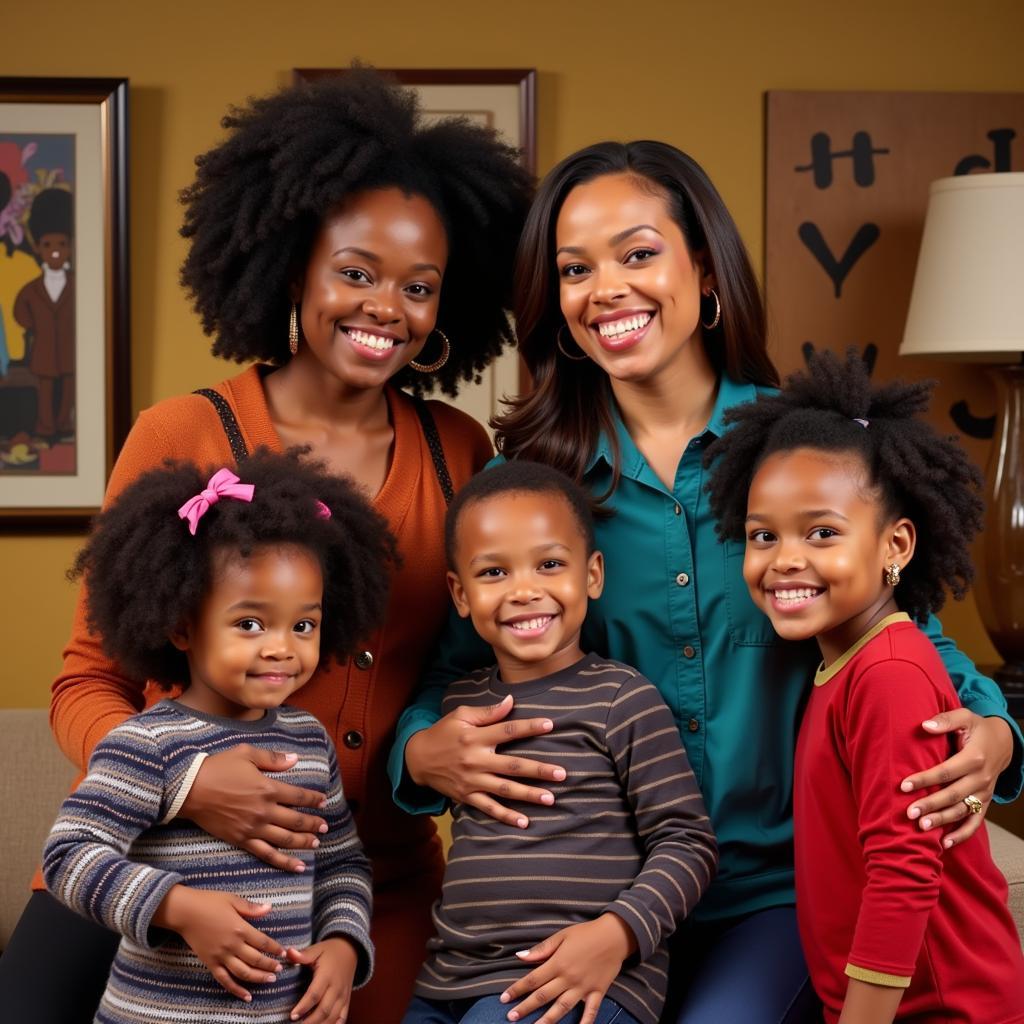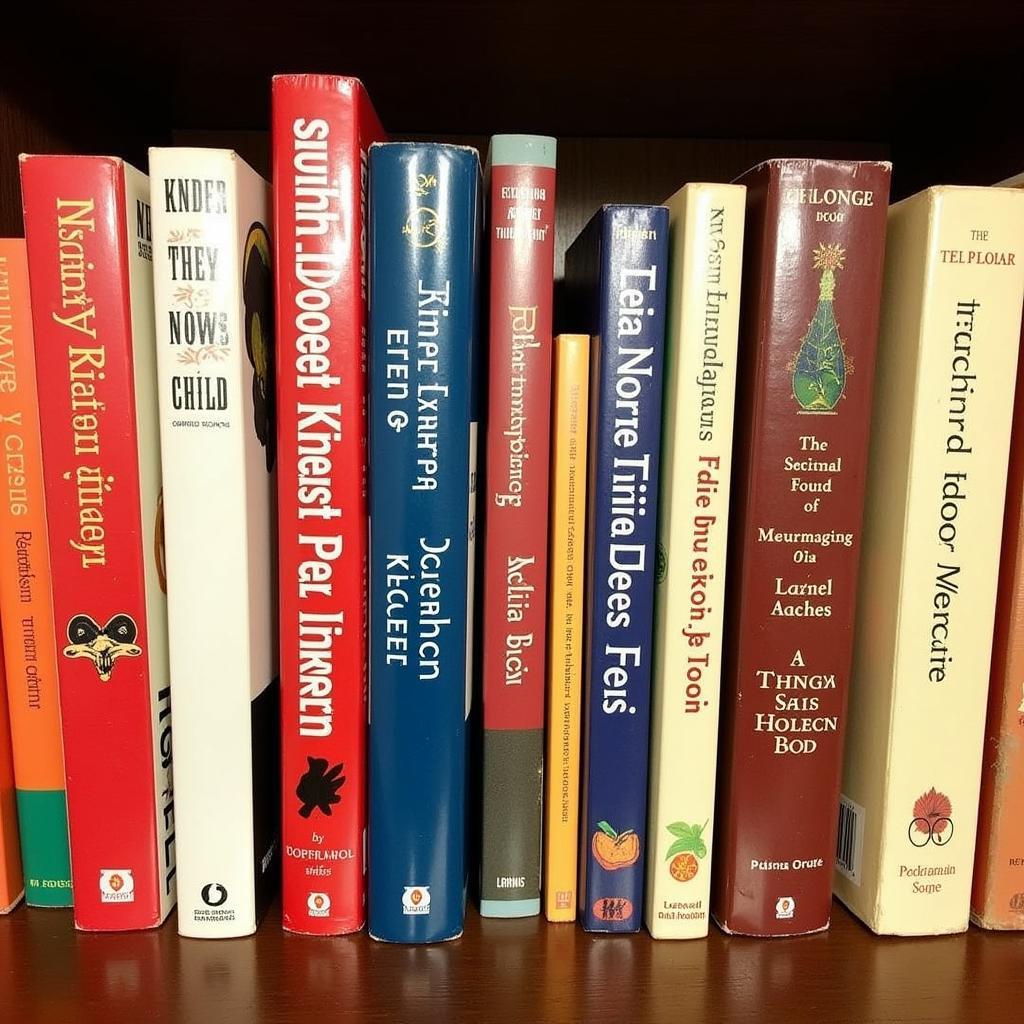Iconic African American Cartoon Characters: Shaping Representation in Animation
African American Cartoon Characters have come a long way, evolving from stereotypical portrayals to multi-dimensional figures that reflect the richness and diversity of Black identity. This evolution in representation marks a significant shift in the animation industry, highlighting a growing awareness and commitment to inclusivity.
 Famous African American Cartoon Characters
Famous African American Cartoon Characters
Early Representation: Breaking Barriers and Challenging Stereotypes
The history of African American representation in animation is marked by a struggle for visibility. Early portrayals often relied on harmful stereotypes, perpetuating racist caricatures rather than showcasing the true complexity of Black experiences. However, even within these limitations, some characters emerged as trailblazers, paving the way for more nuanced representation in the future.
One such example is Black animation pioneer, Floyd Norman, who broke down barriers as the first African American animator at Disney in the 1950s. His work on classics like “Sleeping Beauty” and “101 Dalmatians” challenged the industry from within, opening doors for future generations of Black animators.
The Rise of Black Animation: Giving Voice to Authentic Narratives
The late 20th century witnessed a significant shift with the emergence of Black animation studios and creators dedicated to telling authentic stories from their own perspectives. Shows like “Fat Albert and the Cosby Kids,” created by Bill Cosby, tackled social issues affecting the Black community, using humor and relatable characters to educate and entertain.
 The Proud Family Characters
The Proud Family Characters
This period also saw the rise of “The Proud Family,” a groundbreaking animated sitcom that celebrated Black culture and family life. Characters like Penny Proud, a relatable teenager navigating adolescence, resonated with audiences of all backgrounds, proving that diverse storytelling could be both entertaining and commercially successful.
Contemporary Voices: Diversity and Inclusion Take Center Stage
The 21st century has ushered in an era of unprecedented diversity and inclusion in animation. Shows like “Doc McStuffins” featuring a young Black girl aspiring to be a doctor, and “Craig of the Creek,” exploring the adventures of a group of Black friends, reflect a commitment to showcasing the multifaceted realities of Black childhood.
 Black Superheroes in Animation
Black Superheroes in Animation
Moreover, the rise of streaming services has created more opportunities for diverse voices in animation. Shows like “Cannon Busters” and “Hair Love” demonstrate the power of animation to tell unique and captivating stories that transcend cultural boundaries.
The Importance of Representation: Inspiring Future Generations
The increasing visibility and positive portrayal of African American characters in animation have a profound impact on young viewers. Seeing themselves reflected in their favorite characters fosters a sense of belonging and empowers children to dream big, knowing that their stories are worthy of being told.
Furthermore, diverse representation in animation challenges stereotypes and promotes understanding and empathy among viewers of all backgrounds. By showcasing the richness and complexity of Black experiences, animation can play a crucial role in creating a more inclusive and equitable world.


